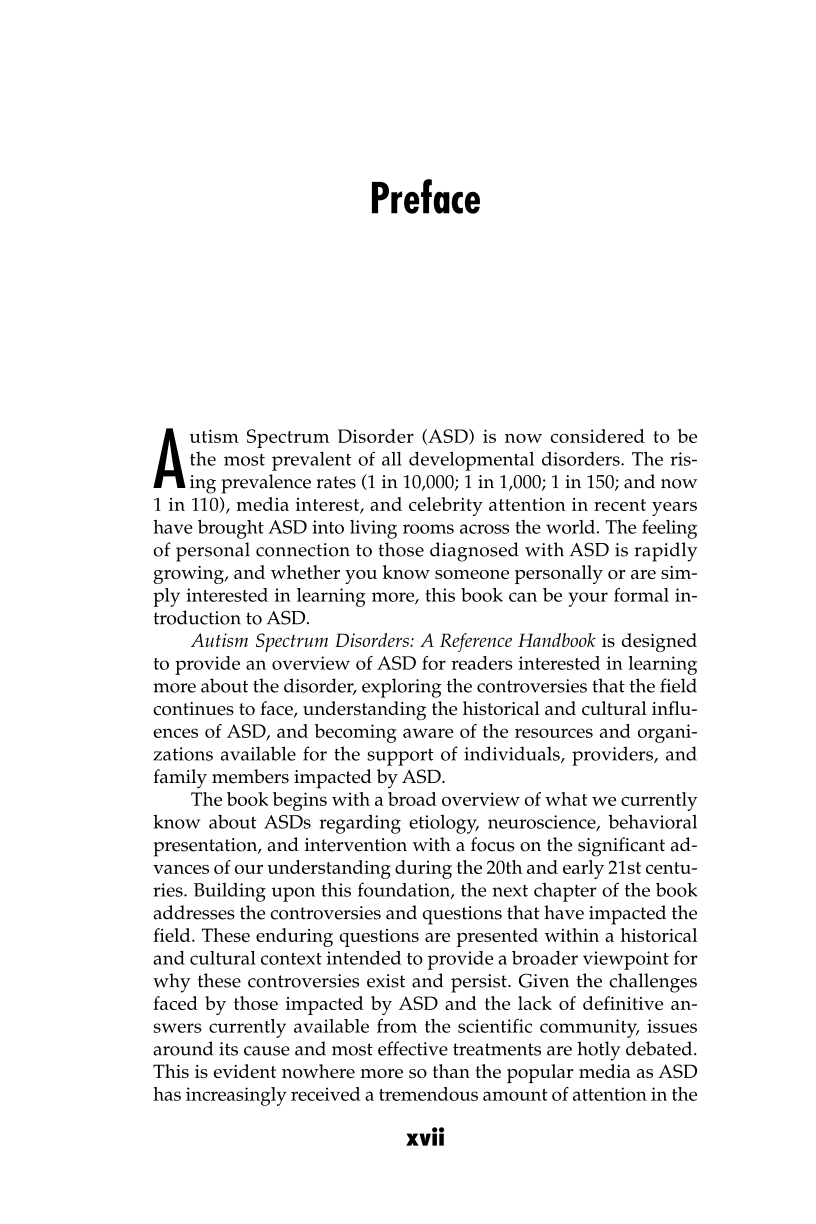xvii
A
utism Spectrum Disorder (ASD) is now considered to be
the most prevalent of all developmental disorders. The ris-
ing prevalence rates (1 in 10,000; 1 in 1,000; 1 in 150; and now
1 in 110), media interest, and celebrity attention in recent years
have brought ASD into living rooms across the world. The feeling
of personal connection to those diagnosed with ASD is rapidly
growing, and whether you know someone personally or are sim-
ply interested in learning more, this book can be your formal in-
troduction to ASD.
Autism Spectrum Disorders: A Reference Handbook is designed
to provide an overview of ASD for readers interested in learning
more about the disorder, exploring the controversies that the field
continues to face, understanding the historical and cultural influ-
ences of ASD, and becoming aware of the resources and organi-
zations available for the support of individuals, providers, and
family members impacted by ASD.
The book begins with a broad overview of what we currently
know about ASDs regarding etiology, neuroscience, behavioral
presentation, and intervention with a focus on the significant ad-
vances of our understanding during the 20th and early 21st centu-
ries. Building upon this foundation, the next chapter of the book
addresses the controversies and questions that have impacted the
field. These enduring questions are presented within a historical
and cultural context intended to provide a broader viewpoint for
why these controversies exist and persist. Given the challenges
faced by those impacted by ASD and the lack of definitive an-
swers currently available from the scientific community, issues
around its cause and most effective treatments are hotly debated.
This is evident nowhere more so than the popular media as ASD
has increasingly received a tremendous amount of attention in the
Preface




























































































































































































































































































































































